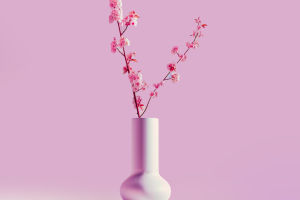The lily is an ancient and elegant flower, renowned for its distinctive beauty and fragrance.
Historically, it has not only been admired as an ornamental flower but also holds rich symbolic meanings and cultural significance.
There are numerous species of plants in the genus Lilium, which are widely distributed and come in various forms and colors. From pure white to deep red, orange, and other shades, the appearance of the lily always leaves a lasting impression. Its variety in color and structure only adds to its allure, with each different species offering something unique.
The history of lily cultivation can be traced back thousands of years. In ancient Greece and Rome, the lily was revered as a symbol of purity and elegance and was often linked to goddesses in mythological stories.
In particular, in Greek mythology, the lily was considered a symbol of the goddess Hera, the protector of marriage and family. As a result, the flower has often been used in wedding ceremonies, symbolizing beauty and purity. This tradition persists today, with lilies still commonly seen in many Western weddings.
However, lilies are not confined to Western traditions; they also occupy a significant place in Eastern culture. In China, the lily has long been esteemed as an auspicious flower and is frequently used as decoration for weddings and festivals.
Beyond its ornamental value, the rhizome of the lily has been widely utilized in traditional medicine. It is believed to have various health benefits, including nourishing yin, moistening the lungs, calming the mind, and promoting heart health. The lily thus holds dual significance in Chinese culture, as a plant that is both beautiful and practical.
In the world of gardening, lilies have become a popular choice due to their diverse colors and forms. Their upright flower stems and large blossoms make them ideal focal points in flower beds, as they easily draw attention.
Over time, gardeners have developed numerous hybrid varieties of lilies to cater to different aesthetic preferences. In modern gardening, lilies are not just grown outdoors; they are also widely cultivated in greenhouses and home gardens.
Lilies are relatively easy to grow, making them a suitable option for both novice and experienced gardening enthusiasts. They thrive in sunny environments but can also grow well in partially shaded areas. The soil in which lilies are planted must be well-drained and rich in organic matter to support healthy root development.
While lilies can adapt to various climates, they flourish in cooler conditions, particularly in spring and autumn. During these moderate seasons, lilies bloom for longer periods, and their flowers become even more vibrant.
In addition to their visual appeal, lilies are beloved for their rich fragrance. Many perfume brands use lilies as a base for crafting elegant and alluring scents that are popular among women worldwide.
The fragrance of lilies is refined and not overpowering, often evoking feelings of warmth and tranquility. As a result, lilies are frequently used as home decorations or gifts, particularly during festivals and birthdays, when lily bouquets are offered to convey good wishes and blessings.
The symbolic meanings of lilies extend beyond purity and elegance. Different colors of lilies carry distinct symbolic meanings as well. For example, white lilies represent purity and are commonly used at weddings or funerals to show respect and remembrance for the deceased.
Yellow lilies symbolize friendship and happiness, making them ideal for expressing good wishes to friends. Pink lilies, on the other hand, symbolize prosperity and wealth and are often used in celebratory settings. These diverse symbolic meanings make lilies a versatile choice for conveying emotions in various contexts.
As a flower that symbolizes beauty, purity, and elegance, lilies have earned deep admiration from people all over the world. They not only possess rich cultural connotations but also play a significant role in daily life.
Whether serving an ornamental function, providing medicinal benefits, or acting as a spiritual symbol, the lily remains a plant of undeniable charm and significance.


